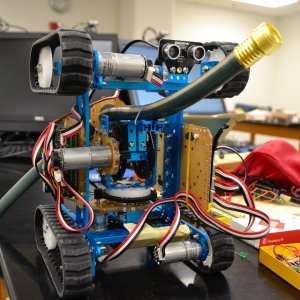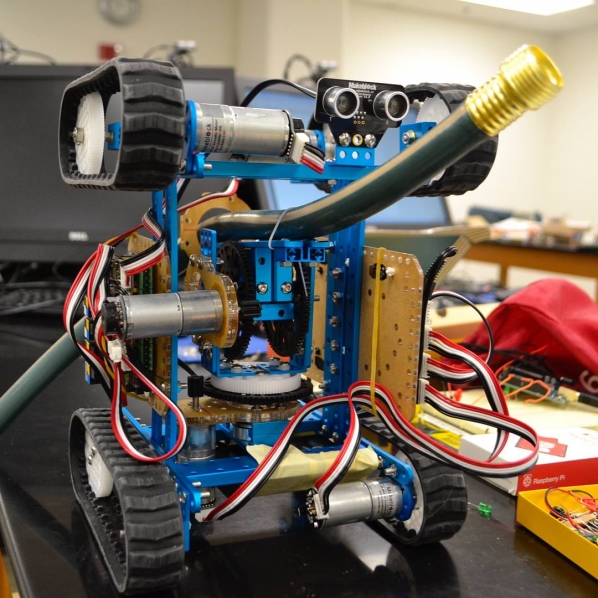Summer Ventures in Science and Mathematics is a no-cost, state-funded program for academically talented North Carolina students who aspire to careers in science, technology, engineering and mathematics (STEM). As a rising high school junior or senior, students live on a college campus for four weeks in the summer and conduct research around topics of their interest while enjoying the company of like-minded peers.
Daniel Ingram, Lecturer, Department of Physics and Astronomy at Appalachian State University, created a robotics course for Summer Ventures for the first time this past summer and he will resume his position again this year. The previous class he led was a resounding success, with one group winning the Catalyst Award for their project, which allowed them to present at the State of North Carolina Undergraduate Research & Creativity Symposium as high school students. This is in addition to another group that has now won first place at the State Science Fair for their project.
The first two weeks of this course are dedicated to instruction and hands-on learning of electronics, mechanical engineering and programming to lay the foundation for continued robotics education, as well as to better prepare the students to begin work on a comprehensive robotics project of their own choosing. The projects created last year included:
- Traffic light detection system for autonomous vehicles
- 3D pancake printer
- Self-aiming NERF gun
- Autonomous robotic arm for sorting recyclables
- Sun-tracking solar panel
- Autonomous lighting/security system (Catalyst Award winner)
- Fire Extinguishing and Reconnaissance Bot - FERB (State Science Fair winner)
One of the most popular projects, FERB, was designed and built by two students, to be capable of being thrown into a burning building. Regardless of how it landed, it was able to move around somewhat reliably. The group also built and programmed a hose attachment that could be used to direct the water stream in multiple directions. The students wrote a computer vision program using a Raspberry Pi camera attached to FERB that successfully searched the scene for potential fires and streamed this video along with information regarding the location of the fire back to an internet browser.
With the 2018 session just around the corner, packets were mailed to finalists in April. Classes are assigned after students accept their invitations. For more information on how to get involved in the N.C. Summer Ventures program, visit: https://www.ncssm.edu/summerventures
###
About the Department of Physics and Astronomy
The Department of Physics and Astronomy curriculum has an applied nature that includes a core of fundamental physics courses and laboratory experiences. The department prepares graduates for a variety of scientific, teaching or engineering professions, as well as future educational endeavors. Learn more at https://physics.appstate.edu.
About the College of Arts & Sciences
The College of Arts and Sciences is home to 16 academic departments, two stand-alone academic programs, two centers and one residential college. These units span the humanities and the social, mathematical and natural sciences. The College of Arts and Sciences aims to develop a distinctive identity built upon our university's strengths, traditions and unique location. Our values lie not only in service to the university and local community, but through inspiring, training, educating and sustaining the development of our students as global citizens. There are approximately 5,850 student majors in the college. As the college is also largely responsible for implementing Appalachian's general education curriculum, it is heavily involved in the education of all students at the university, including those pursuing majors in other colleges. Learn more at http://cas.appstate.edu.
By Howell Keiser
April 30, 2018
BOONE, N.C.

